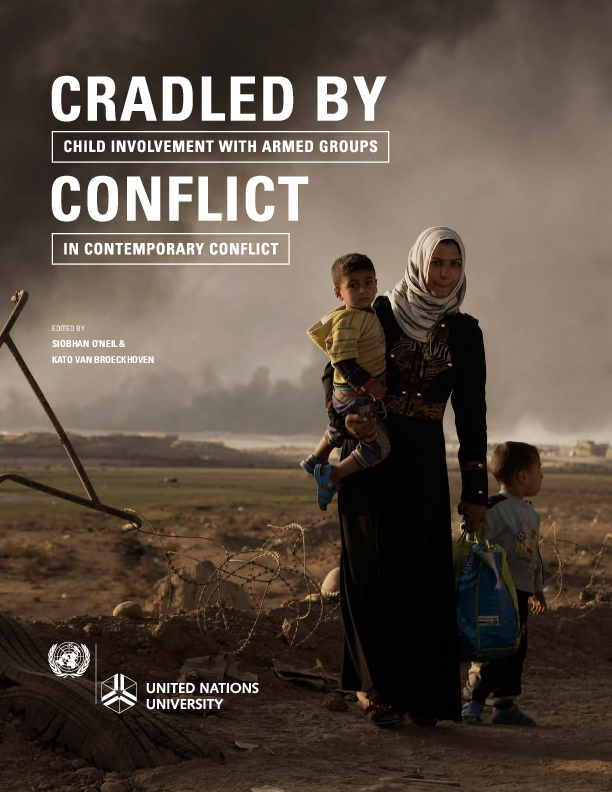
Reports, Study: Research
Cradled by Conflict: Child involvement with armed groups in contemporary conflict
Publication year:
2018
English
Format:
(11.4 MiB)
Publisher:
United Nations University
Today, there is concern that the nature of contemporary conflict, and the non-state armed groups fighting them, pose seemingly new policy and programmatic challenges to prevent child recruitment by, and facilitate disengagement of children from, these groups. We are thus confronted with the question – does the international community’s approach to preventing child association with non-state armed groups, and releasing and reintegrating associated children, require a reassessment, particularly in light of extreme violence and tactics associated with many of the non-state armed and terrorist groups fighting today?
This volume is a valuable first step to addressing this pressing question. It seeks to understand how and why children become associated with, are used, and exit non-state armed groups in contemporary conflict in order to craft effective policy and programmatic responses. While the opinions expressed in this publication are those of the authors and do not necessarily reflect the views or policies of UNICEF, DPKO, and the Governments of Luxembourg and Switzerland, we trust this volume will provoke serious reflection on, and inform discussions about, how the international community can prevent and respond to child recruitment and use by armed groups in today’s conflicts. To be effective, the international community’s response must be rights-based, empirically grounded, responsive to challenging operational realities and do no harm and uphold the principles of best interests of children.
With this in mind, the two-year initiative that produced this volume has been driven by a dedication to research excellence and emphasis on collaboration by a wide-range of stakeholders. This collaborative approach extended to the management of the project itself as each organization and government represented in this preface was involved in a joint effort to shepherd this important initiative from the very outset. We feel that this collaboration is exemplary of the system-wide approach and broader cooperation necessary to successfully tackle the global policy challenges of today and tomorrow. Likewise, we feel the focus on operationalizing research is laudable; we must endeavor to support research that translates into concrete programmatic guidance to assist child protection and other humanitarian actors in the field working to effectively and safely prevent child association with armed groups and facilitate disengagement and reintegration for already associated children.
It is also worth highlighting that this research initiative, through a variety of strategies, has endeavored to engage war-affected children to ensure that no research or programmatic efforts about them, are made without them. To build sustainable peace, we must shift the perspective of seeing war affected children as passive programme beneficiaries and recognize their potential as partners on the long road to peace.
Read full abstract
Authors
View & Download
Document information
Publisher
Authors
Content type
Rights
© Author/Publisher
Found a mistake? Help us improve!
If you have noticed a document assigned to the wrong author or any other inaccuracies, let us know! Your feedback helps us keep our data accurate and useful for everyone.
Share
Link
